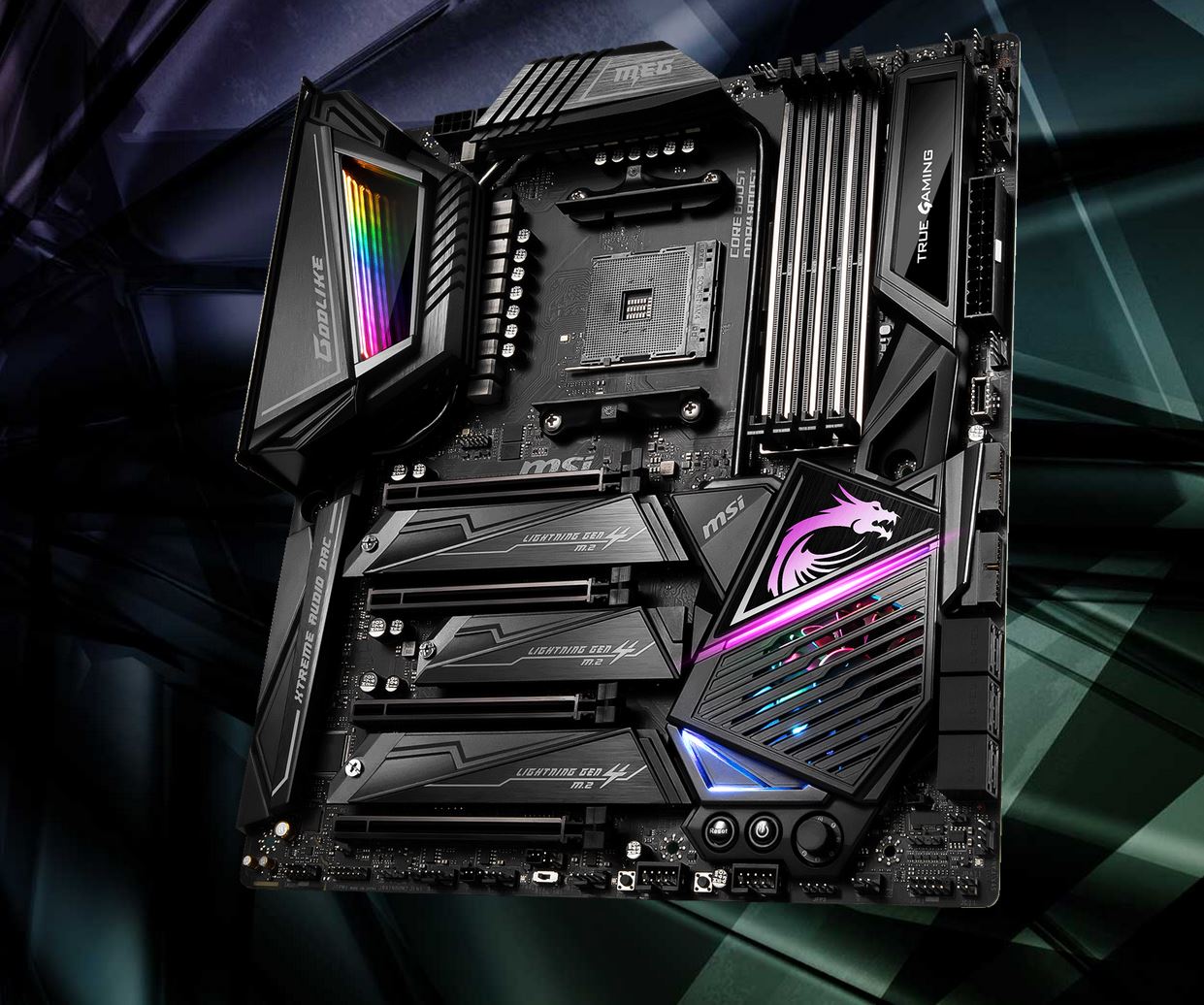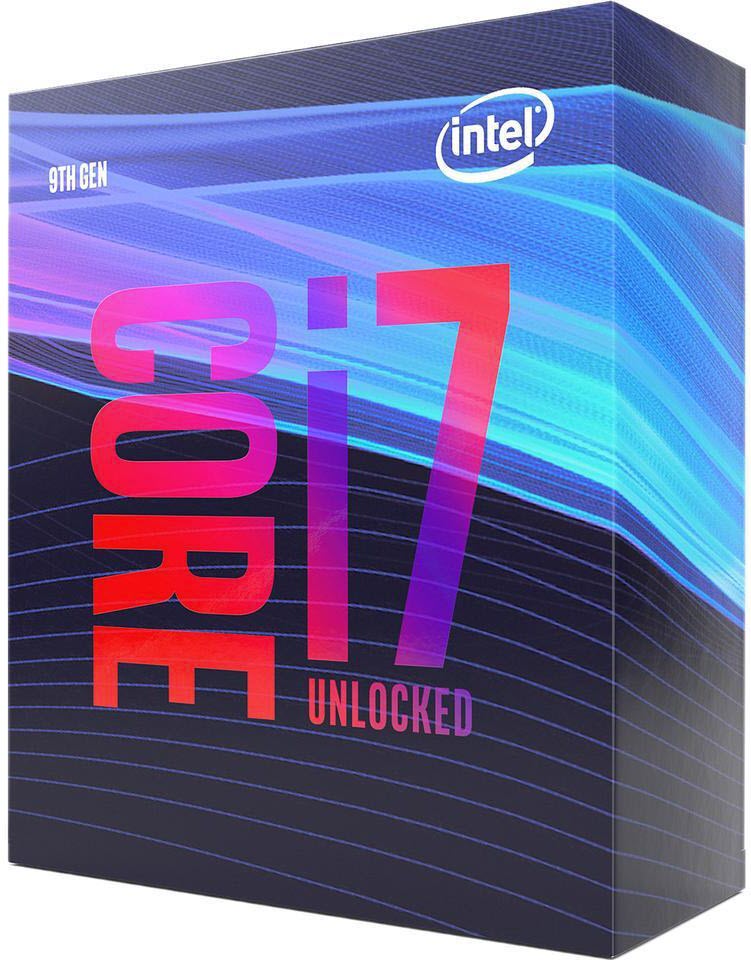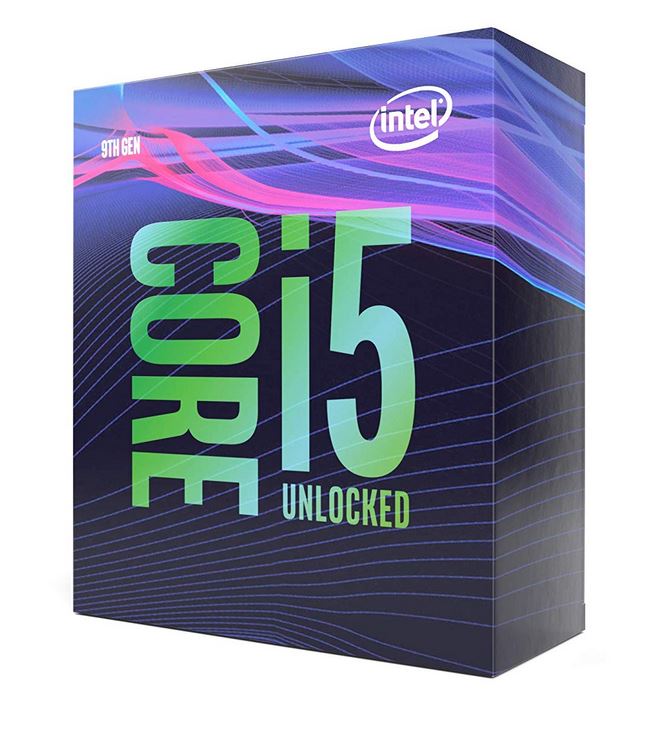AMD Ryzen 5 3600X Review: the New Mid-Range CPU Leader
Why you can trust Tom's Hardware
Overclocking and Test Setup
AMD's Ryzen 3000 processors have drastically improved single-threaded performance, but you'll lose that benefit if you choose to overclock the Ryzen 3000-series processors manually. This unfortunate side effect comes because the chips can't be manually overclocked on all cores to reach the same frequency as the single-core boost frequency. In fact, we often find the all-core overclock ceiling to be 200 to 300 MHz lower than the rated boost speeds (which we did see activate frequently on our Ryzen 5 3600X sample).
We've tested several of the Ryzen 7 processors and the Ryzen 9 3900X in manually-overclocked configurations throughout our entire suite of benchmarks, and the results are predictable: You gain some extra threaded performance over automatic overclocking with PBO, but lose too much performance in lightly-threaded apps to make it worthwhile. In other words, outside of a few edge cases, like systems that will only do heavily-threaded work, manual overclocking simply isn't worth your time -- or the egregious power consumption it requires for relatively small performance gains.
So we're sticking with AMD's PBO feature for this round of testing. As we've seen, these algorithms provide a speedup that improves threaded performance while also leaving the single-core boost frequency intact. The feature also keeps the Ryzen processor in its power-to-performance sweet spot, which means that it doesn't require too much additional power consumption or cooling. Unfortunately, the gains via PBO are slight, so you definitely shouldn't expect miracles, but they are worthwhile if you have sufficient cooling. However, given the relatively small performance boosts, we think you could get most of the PBO feature with the stock cooler, which we'll put to the test today.
AMD's Precision Boost Overdrive (PBO) is an adaptive overclocking approach that allows the processor to communicate with the platform to modulate performance based on the motherboard's power delivery subsystem and thermal dissipation capabilities. The processor monitors Package Power Tracking (PPT), which is total socket power, and the Thermal Design Current (TDC) variable, which is the motherboard's maximum available sustained current. Electrical Design Current (EDC) also indicates the maximum current possible from the VRMs during peak/transient conditions.
| 95W CPU Limits | PPT | EDC | TDC |
| AMD IPM | 128W | 80A | 125A |
| MSI X570 Godlike | 1000W | 490A | 630A |
AMD enables two options for PBO: IPM is AMD's default PBO setting, which is activated if you leave the PBO setting to 'Auto' in the Godlike's UEFI. But you can select 'Enabled' to activate a profile that's dictated by the maximum limits of the motherboard's power delivery subsystem. These limits vary by motherboard and are defined by the vendor. We chose the latter to unlock the full potential of PBO. This setting kicks the socket's maximum power delivery up to 1000W to offer the best of increased multi-core boost clocks while retaining the high single-core boost clocks.
You can also further tune the power delivery options with an Auto OC (AOC) feature. This new feature grants you some control over the maximum attainable boost clocks by allowing you to add up to an extra 200MHz to the maximum boost clock, but it isn't guaranteed that the processor will reach those speeds at all times, or under all conditions. Instead, the processor will still respect the limits imposed by the motherboard maker.
Unfortunately, we've found that the PBO+AOC feature often comes at the expense of performance in single-threaded workloads even though it is billed as retaining, and even heightening, single-core boost clocks. From a performance and power consumption standpoint, it is more comparable to an all-core overclock. We chose to go with the limits of the motherboard, noted on the charts as PBO.
Get Tom's Hardware's best news and in-depth reviews, straight to your inbox.
Security Mitigations
The new AMD-optimized Windows scheduler is only present in Windows 10 1903 and promises to expose gains in several types of applications. As such, we updated our test image to the latest version of Windows 10 available (18362.207). All of our test results come from the aforementioned operating system and include all publicly available security mitigations and the latest motherboard firmware revisions. Intel is currently impacted by Spectre, Spectre v4, Meltdown, Foreshadow, Spectre v3a, Lazy FPU, Spoiler, and MDS, while AMD is only impacted by Spectre and Spectre v4. AMD has added hardware-based mitigations for both variants of Spectre, which should reduce the performance impact, but the requisite patches for both companies have performance penalties, which are reflected here in our testing.
A Note on Multi-Core Enhancement (MCE)
Intel's motherboard partners have infused their boards with predefined all-core boost profiles that go by many names, such as Multi-Core Enhancement (MCE) with ASUS motherboards and Enhanced Turbo with our MSI motherboard. These features are largely referred to as MCE, but the functionality remains the same: These settings essentially apply an all-core overclock to the processor that is defined by the maximum Turbo Boost bin supported by the processor. This setting modifies the CPU's clock rate and voltage to deliver higher performance, which is basically factory-sanctioned overclocking.
MSI turns this on by default in its BIOS, similar to most of its competition. Performance, power consumption, and heat are all affected, naturally. We manually disable this feature for our stock CPU testing to best reflect Intel's specifications.
Phoronix Benchmark
We added in several new tests from Phornix's open-source benchmark suite. While this suite is heavily focused on Linux test environments, the benchmark utility does have several powerful testing options for Windows systems, along with Apple OS X, GNU Hurd, Solaris, and BSD operating systems. The test also outputs deviation metrics that help ensure accuracy in our test results.
We're integrating key tests, like GIMP productivity, web browser benchmarks, SVT-AV1 encoding, NAMD, and a build-llvm compile-time test.
MSI MEG X570 Godlike
We're using MSI's MEG X570 Godlike as our test platform for the second- and third-gen AMD processors. Due to the compatibility matrix for the AM4 socket, we stepped back to the MSI X470 Gaming M7 AC for the Ryzen 7 1800X.
The pricey Godlike board retails for around $800, but has the 14+4+1-phase power delivery subsystem to support aggressive overclocking.
The MEG X570 Godlike sits at the top of MSI's X570 motherboard hierarchy. It also comes with a few nifty accessories like a 10Gb “Super LAN” Ethernet card and a PCIe Gen 4 Xpander-Z M.2 expansion card. That lets you add two more M.2 drives to complement the three M.2 PCIe Gen 4 M.2 ports on the board. You also get four PCIe 4.0 x16 slots, an RGB Mystic Light Infinity II mirror over the IO shroud, and a tiny OLED screen, alongside the two-digit LCD display for error codes.
Comparison Products
| Test System & Configuration | |
| Hardware | AMD Socket AM4 (X570)AMD Ryzen 9 3900X, Ryzen 7 3800X, Ryzen 7 3700X, Ryzen 5 3600X, Ryzen 7 2700XMSI MEG X570 Godlike2x 8GB G.Skill Flare DDR4-3200Ryzen 3000 - DDR4-3200, DDR4-3600Second-gen Ryzen - DDR4-2933, DDR4-3466Intel LGA 1151 (Z390)Intel Core i9-9900K, i7-9700K, Core i5-9600KMSI MEG Z390 Godlike2x 8GB G.Skill FlareX DDR4-3200 @ DDR4-2667 & DDR4-3466AMD Socket AM4 (X470)AMD Ryzen 5 1600XMSI X470 Gaming M7 AC2x 8GB G.Skill FlareX DDR4-3200 @ DDR4-2933All SystemsNvidia GeForce RTX 2080 Ti 2TB Intel DC4510 SSDEVGA Supernova 1600 T2, 1600WWindows 10 Pro (1903 - All Updates) |
| Cooling | Corsair H115iCustom Loop, EKWB Supremacy EVO waterblock, Dual-720mm radiatorsAMD Wraith Prism, Wraith Stealth Stock Coolers |
MORE: Best CPUs
MORE: Intel & AMD Processor Hierarchy
MORE: All CPUs Content

Paul Alcorn is the Editor-in-Chief for Tom's Hardware US. He also writes news and reviews on CPUs, storage, and enterprise hardware.
-
DookieDraws Reply
Shhhhhhhh. You're going to get everyone to buy one at that time and possibly screw us up from getting one. :p However, you can grab one through Google's store right now and save $20 off the price by applying their promo code. I'm just not ready right now.SgtScream said:The regular 3600 is going to be an absolute steal for black friday deals. -
Gurg You are really trying way too hard in your AMD sales pitch. Seriously how many gaming enthusiasts buy their CPUs at Walmart especially when its prices are $17 higher than Amazon? Amazon 3600x costs a McDonald's double quarter pounder more than the the 9600k. As for competitive pricing, my local Microcenter sells the 9600k for $219.99.Reply
The overclocked and similarly cooled 9600k shows a 10.5% advantage in average gaming FPS and an 11.5% FPS advantage in 99th percentile gaming FPS over the 3600z. Even more the OC 9600k also whips the 3900x, 3800x and 3700x by convincing margins. Note the AMD cpus also lack igpus. In the value charts you used the three double quarter pounder and diet cokes higher Walmart pricing for the 9600k rather than Amazon to make a value basis for 3600x.
If your emphasis is not gaming or MS Office but rather workstation usage then the 3600x should be recommended. Why would anyone not planning on overclocking and at strictly value bother to buy pay extra for an X or K? If the 3600x is the new gaming king---the king has no clothing. -
TCA_ChinChin You know it's good when people start accusing Tom's of being AMD shills when usually people call them Intel shills. I'll agree with @Gurg in that the i5-9600k is still better in gaming against Ryzen 3000 in many cases though so calling 3600x the winner in gaming (against the i5-9600k) is a stretching it a little. The difference is now small enough that the extra cores are probably worth more to the average buyer than the increased FPS the 9600k offers, NOT because Ryzen 3600x is strictly better in gaming.Reply -
AlistairAB ReplyGurg said:You are really trying way too hard in your AMD sales pitch. Seriously how many gaming enthusiasts buy their CPUs at Walmart especially when its prices are $17 higher than Amazon? Amazon 3600x costs a McDonald's double quarter pounder more than the the 9600k. As for competitive pricing, my local Microcenter sells the 9600k for $219.99.
The overclocked and similarly cooled 9600k shows a 10.5% advantage in average gaming FPS and an 11.5% FPS advantage in 99th percentile gaming FPS over the 3600z. Even more the OC 9600k also whips the 3900x, 3800x and 3700x by convincing margins. Note the AMD cpus also lack igpus. In the value charts you used the three double quarter pounder and diet cokes higher Walmart pricing for the 9600k rather than Amazon to make a value basis for 3600x.
If your emphasis is not gaming or MS Office but rather workstation usage then the 3600x should be recommended. Why would anyone not planning on overclocking and at strictly value bother to buy pay extra for an X or K? If the 3600x is the new gaming king---the king has no clothing.
With a 2080 ti at 1080p and an OC for the 9600k you might get 4 percent better avg fps. With a 2080 at 1440p? Exactly the same FPS. For the same price you'll buy the 3600x and a 2060 and easily beat the 9600k and a 1660 ti by 25%. The Spire Cooler is included with the AMD CPU, and that's the good one, and you can use a cheap motherboard also. The whole computer industry is kind of ridiculous that you even need to explain to people why the 3600x is better when it is so obvious. -
DavidDisciple ReplyGurg said:Even more the OC 9600k also whips the 3900x, 3800x and 3700x by convincing margins.
Notice you said OC 9600K. Isn't it something that a 3rd generation Ryzen is on par and sometimes defeating a 9th generation Intel chip insomuch that you have to overclock it to compete with a 3rd generation Ryzen at stock speed. That says a lot about how good Ryzen's architecture is compared to 9 generations of Intel. The Ryzen architecture is so well refined now that there isn't much overclocking room to begin with. I am not an overclocker to begin with and don't want to overclock contrary to your belief that everyone plans to do it. If I buy a high performance chip to begin with, why would I need to do it? If I need to overclock my chip to compete against others, obviously I didn't buy a competitive chip out-of-the-box to begin with or my chip is inferior in architecture. -
SethNW Midrange CPU king? Only reason you can say that is because you haven't tested 3600, if you did you would learn that is is about 1-2% slower than 3600X and last time I checked, paying good 50USD extra isn't worth that small uplift. And reason for this is in Percision Boost, which will boost CPU based on temperature and power headroom. Keeping two CPUs really close. And better cooler just isn't worth it with 3600X. So I am not sure if this was done to bait clicks or if it was done to sell clicks of affiliate links of more expensive item. But what I can say for sure, it definitely wasn't done for good of the reader. Sorry, but you will see when you review 3600.Reply -
Gurg ReplyAlistairAB said:With a 2080 ti at 1080p and an OC for the 9600k you might get 4 percent better avg fps.
TH tested with a 2080ti @ 1080p and the Conclusion chart showed an average gaming fps of 136.4 vs 123.4 a 10.53% difference between OC 9600k and PBO OC 3600x, both using the same h115i closed loop cooler. If the 3600x is using the spire cooler the difference goes to 11.26%. -
djayjp Anybody buying less than 8c/16t for gaming is a fool--next gen consoles will have this (will basically be a 3700x at 65W) so this will become the new minimum requirement.Reply -
SgtScream Reply
Dude relax. Not everyone can afford an 8 core 16 thread chip and that doesn't make them a fool.djayjp said:Anybody buying less than 8c/16t for gaming is a fool--next gen consoles will have this (will basically be a 3700x at 65W) so this will become the new minimum requirement.




